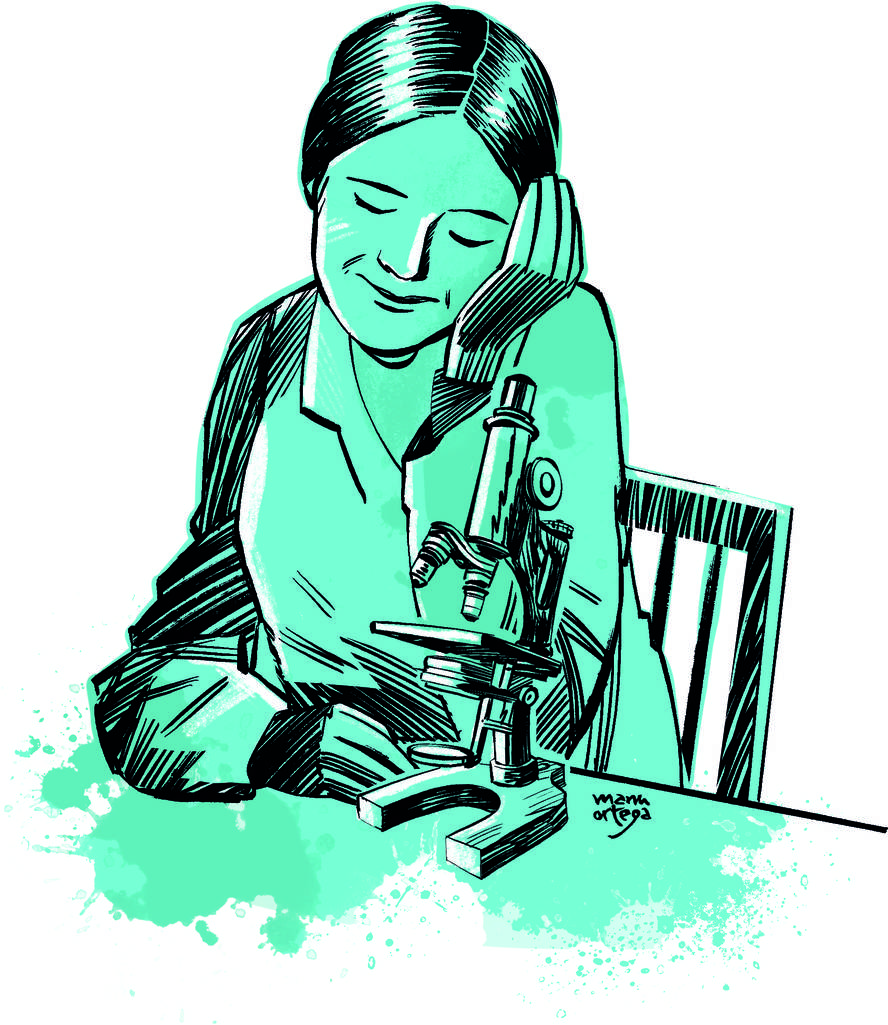Mother of in vitro fertilization
On Tuesday, look for the right eggs, on Wednesday, put them with the sperm, on Thursday pray, and on Friday look under a microscope. He did so for six years by Miriam Friedman Menkin, until one Friday he looked at him from the microscope and saw him finally, merging an egg and a spermatozoid, starting cell division, producing fecundation. It had before it the first embryo created outside a woman's body.
He discovered the key. She spent Tuesday without barely sleeping taking care of her half-year-old daughter. The next day, “I was so tired and asleep that when I looked at the sperm around the egg from the microscope, I realized it was an hour,” Menkin said. It was twice what the protocol dictated. “I have to acknowledge that after spending six years unsuccessfully, not because I had a moment of excellence, but because I slept at work.”
But he didn't get to him while he slept. Born in Latvia in 1901, his family migrated to the United States at the age of two. His father was a doctor and they had a comfortable life. She graduated in histology and comparative anatomy from Cornell University. He later studied genetics at Columbia University. And I wanted to do medicine, but they didn't accept it anywhere. Because women were hard to admit to schools.
Valy married Menkin. She studied medicine at Harvard and Miriam started working as a secretary so her husband could continue his studies. However, she managed to learn bacteriology and embryology and help her husband in laboratory experiments. So he met Gregory Pincus, a biologist who offered him a job. Pincus was known for having managed to fertilize in vitro with rabbits. Menkin was dedicated to extracting hormones from the pituitary to rabbits and introducing them into the uterus to achieve greater ovulation of rabbits.
However, Pincus lost his job at Harvard and therefore also Menkin. But he found that Dr. John Rock, a fertility specialist, continued the work of Pincus, who wanted to bring the techniques used with animals to the clinic, thinking that it could be an opportunity for some women who could not have children. Menkin asked Rock for work and when he found out he had been with Pincus, he had no doubt.
Rock performed hysterectomies at the Free Hospital for Women in Brooklin. Every Tuesday at 8 a.m., Menkin was waiting at the operating room door. When everything was going well, Rock was going to give him a sample of the recently extracted ovary, a follicle the size of a hazelnut. Menkin was dropping at full speed three stories below the lab. And there he would start dissecting the follicle looking for precious eggs. Menkin was proud to be Rock’s “egg hunter.”
Week after week, he made 138 attempts in six years. He tried various procedural changes. But every Friday I saw the same thing in the microscope, an unfertilized egg among the dead sperm.
On Tuesday, February 3, 1944, Menkin extracted an egg from a woman who suffered a uterine prolapse after having four children and allowed her to incubate as usual. On Wednesday he kept him with sperm for longer than the protocol indicated. And on Friday, when he looked through the microscope, a scream came out. He doubted whether he was watching well. But the others confirmed that there was a cygote of two cells, a fertilization occurred! Little by little, the lab filled with people.
Menkin achieved three other fertilizations in the coming weeks: one defective, another reached the two-cell phase and the last one reached the three-cell phase. These experiments were published in Science magazine in August 1944.
But by then Menkin was no longer in the Rock lab. Her husband lost his job and got the news in North Carolina, at Duke University. Menkin had to leave everything when he was at the top.
In the following years he made every effort to continue his research in in vitro fertilization. But in vain. At most, they gave him permission to work in a laboratory from five o'clock in the afternoon and on weekends, without any compensation. “But she was the mother of two young children and we didn’t have a fixed place to live in,” she would tell later, and those proposals were “ridiculous.”
However, he tried to do paid work in the morning and continue his investigation in the afternoon. “I am passionate about repeating the technique to reach stages of four and more cells,” Rocki wrote in 1946. To do so, I needed eggs. A colleague offered him that they were going from hospital to hospital in his car. “I think we’re going to design a system, but by then Valy will surely have another job at the other end of the country,” Rock wrote worried. And so it was. They had to go to Philadelphia.
Menkin separated from her husband and returned to Boston. When Rock learned he was there, he offered him a job. But by then the Rock team was already in another line of research. Since he left Menkin, they couldn't germinate more eggs, and now Rock, one of the developers of birth control pills along with Pincus, was looking for ways to prevent fertilization.
In the following years, Menkin investigated issues such as the sterility of horses, the possible stabilization of menstruation through light or the temporary sterilization of men by heating the pants. “Unfortunately we have not been able to continue research in this field [in in vitro fertilization],” Menkin wrote.







